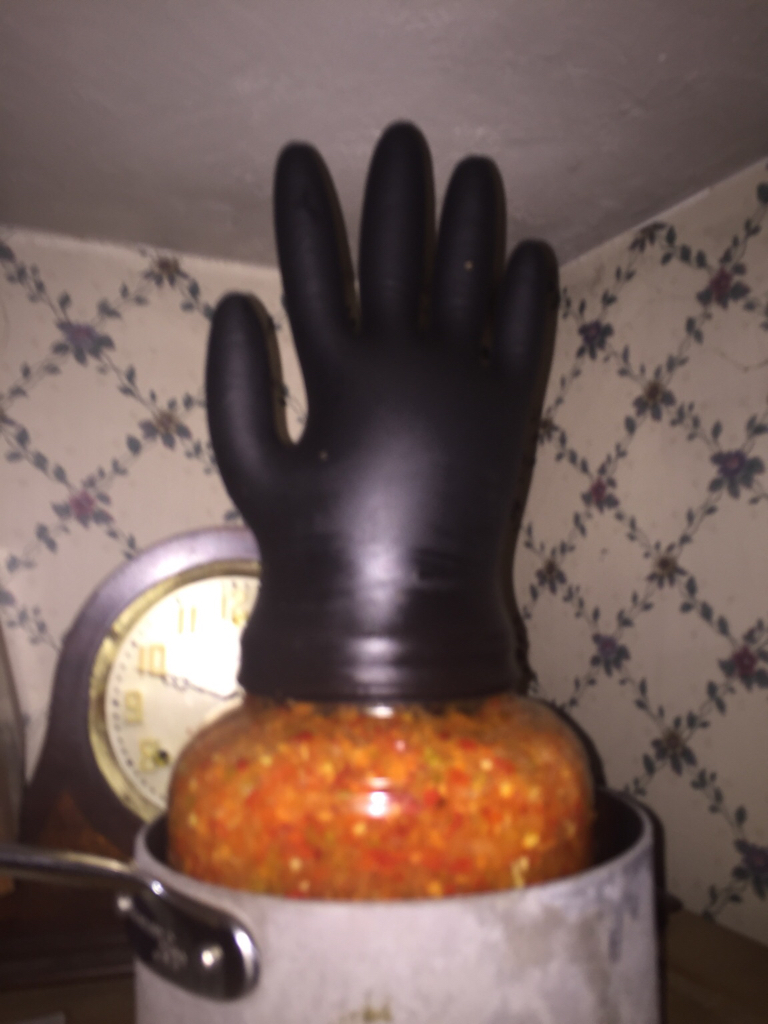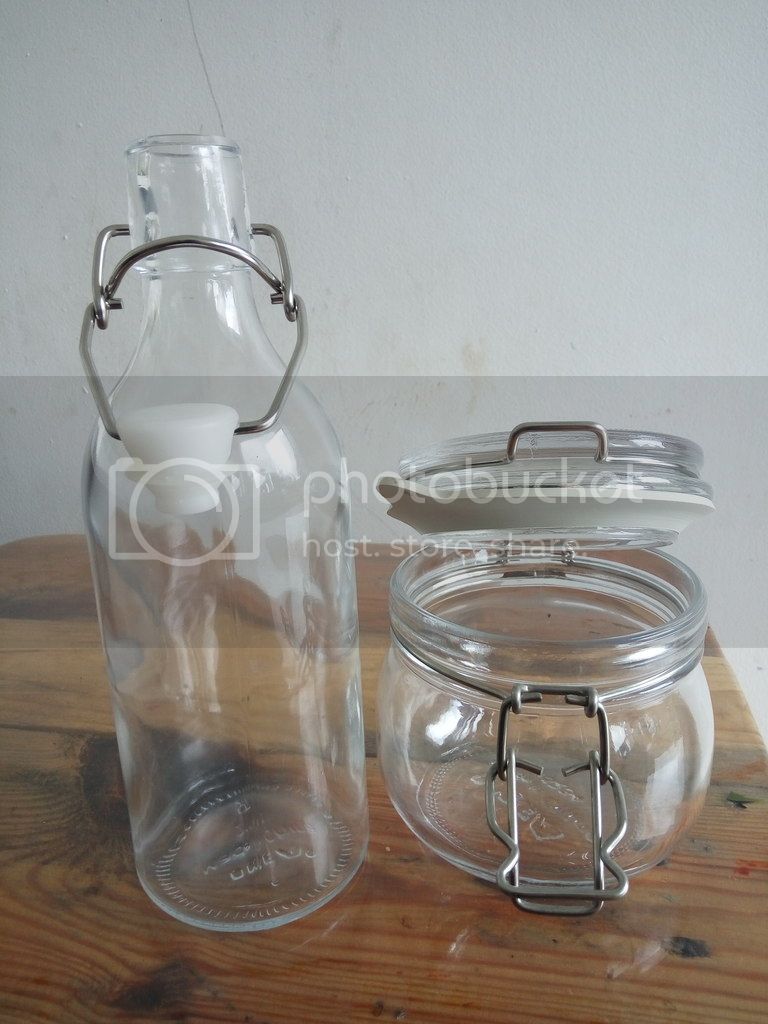So, I started my first fermentation about 2 weeks ago? Because of this awesome thread. I started another probably a week or so after that, but in that one I did not use veggies, but I might have added maple syrup? I forget.
The first one is a mish-mash of 4 kinds of peppers, carrots, garlic, salt, juice from some locally fermented kraut and water. That one did nothing for about a week. I put a ziploc with water in it in the top to try and weigh it down, and then over that I put a heavy duty nitrile rubber glove, to allow for expansion. Friday, even after emergency venting, AND self-venting as it blew part of the glove off, I put it back on and the CO2 offgassing was so strong it ripped the glove.
Took it down, put a new glove on it, put it back, nothing for a day and now we are back to the glove possibly shooting off into space.
The other one is JUST sort of starting to get some gas into the glove. I also had to scoop out some big glop of white stuff off the top when I put the glove on (I had it with just a sealed lit and nothing weighing it down.... (I expect failure here)
So with the first one, do I just keep letting it go until it is done filling up and destroying gloves?
I also learned that Cirtric Acid is what we want to drop PH, not ascorbic, and that it does not take much to take a two mason jar batch of sauce from 3.7 to 2.3.
It also does not take much Xanthan Gum to make a runny sauce into something as thick as mayo.
Learning is fun!

The first one is a mish-mash of 4 kinds of peppers, carrots, garlic, salt, juice from some locally fermented kraut and water. That one did nothing for about a week. I put a ziploc with water in it in the top to try and weigh it down, and then over that I put a heavy duty nitrile rubber glove, to allow for expansion. Friday, even after emergency venting, AND self-venting as it blew part of the glove off, I put it back on and the CO2 offgassing was so strong it ripped the glove.
Took it down, put a new glove on it, put it back, nothing for a day and now we are back to the glove possibly shooting off into space.
The other one is JUST sort of starting to get some gas into the glove. I also had to scoop out some big glop of white stuff off the top when I put the glove on (I had it with just a sealed lit and nothing weighing it down.... (I expect failure here)
So with the first one, do I just keep letting it go until it is done filling up and destroying gloves?
I also learned that Cirtric Acid is what we want to drop PH, not ascorbic, and that it does not take much to take a two mason jar batch of sauce from 3.7 to 2.3.
It also does not take much Xanthan Gum to make a runny sauce into something as thick as mayo.
Learning is fun!



